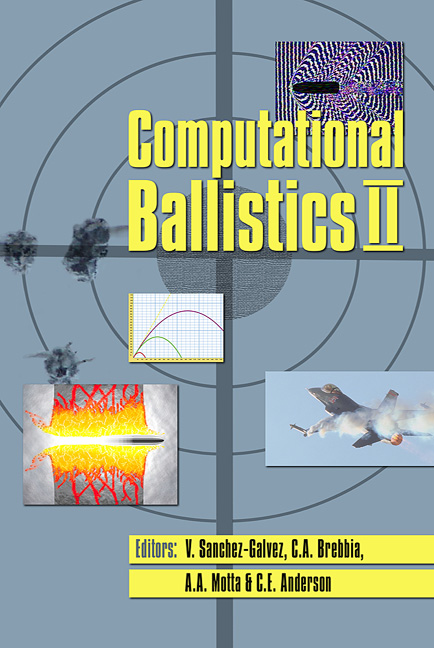Effect Of Lateral Confinement On Penetration Efficiency As A Function Of Impact Velocity
Price
Free (open access)
Transaction
Volume
40
Pages
10
Published
2005
Size
608 kb
Paper DOI
10.2495/CBAL050151
Copyright
WIT Press
Author(s)
C. E. Anderson, Jr. & I. S. Chocron
Abstract
Numerical simulations are used to determine the dependence of normalized depth of penetration (P/L, where L is the projectile length) as a function of the ratio of the target diameter to the projectile diameter (Dt /Dp) and impact velocity, Vp. The parameter space investigated was 3.25 < Dt /Dp < 20, and 1.5 km/s ≤ Vp ≤ 4.0 km/s. It was found that the penetration efficiency, P/L, at low impact velocities is a strong function of the normalized diameter (for Dt /Dp < 20), but that P/L becomes less and less sensitive to Dt /Dp as the impact velocity increases. The simulation results are used to understand this observation. Keywords: penetration mechanics, confinement, penetration efficiency, target resistance, strength, inertial effects. 1 Introduction It is well known that penetration is affected by the proximity of lateral boundaries of a target. Littlefield, et al. [1], conducted a systematic experimental and computational study to assess the dependency of penetration efficiency (as measured by the depth of penetration normalized by the initial projectile length, P/L) of tungsten-alloy, long-rod projectiles as a function of the ratio of target diameter (Dt) to projectile diameter (Dp). The targets were armor steel. The impact velocity in the experiments varied between 1.46 km/s to 1.55 km/s, and the results were adjusted to an impact velocity of 1.50 km/s. Agreement between the simulations and the experiments was excellent, as shown in fig. 1. It is seen in fig. 1 that the target appears to be essentially semi-infinite in lateral extent for Dt /Dp > ~20; but for Dt /Dp < 15, penetration begins to increase quite rapidly as Dt decreases (for constant Dp).
Keywords
penetration mechanics, confinement, penetration efficiency, target resistance, strength, inertial effects.




